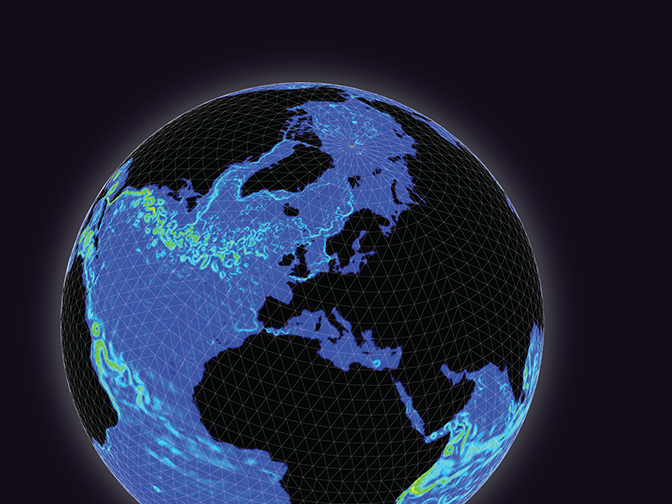

Registration is now open for this year’s Annual Seminar, which runs from 5 to 8 September 2016. The subject this year is ‘Earth system modelling for seamless prediction: On which processes should we focus to further improve atmospheric predictive skill?’.
Keeping in mind ECMWF’s mission to provide reliable and skilful forecasts up to one year ahead, this year’s seminar will explore which Earth system processes need to be represented in our forecasting systems, and at what level of complexity.
The Annual September Seminar has a long tradition at ECMWF and is a well-known event in the European meteorological calendar. It is part of ECMWF’s educational programme, and always covers a topic related to numerical modelling and forecasting. Typical topics are numerical methods, physical parametrization, data assimilation, usage of satellite data, ensemble forecasting and seasonal forecasting. The purpose is to give an overview of a particular research area to mainly young scientists.
Key themes at this year’s seminar will be not only Earth system modelling, including how best to initialise our numerical integrations, but also how to build effective and efficient seamless ensembles.
The term ‘Earth system’ refers to the Earth’s fluid envelope and its interactions with its boundaries. Earth system components such as the atmosphere (including atmospheric composition), the oceans (including sea ice), and the continental land surface have a significant impact on the weather.
'Seamless’ prediction refers to the ability to produce skilful forecasts across different temporal and spatial scales, from minutes to months and from a few kilometres to thousands of kilometres.
How far can we extend the forecast skill horizon of phenomena with different temporal and spatial scales by including more processes and/or by improving the simulation of the ones that are already simulated? Does greater complexity lengthen the forecast skill horizon? Which level of complexity is needed?

The marine component of the Earth system has an important influence on the atmosphere on a range of timescales. (Image: Thinkstock/Goodshoot)
One of the main challenges facing numerical weather prediction is to model the interaction between different parts of the Earth system. Another is to build efficient, fully coupled data assimilation systems that can properly initialise our coupled integrations.
ECMWF scientists recently reported, in a paper published in the Quarterly Journal of the Royal Meteorological Society, that the synergies of better and more complete models, improved data assimilation methods and advances in ensemble techniques have helped to extend the period for which skilful ensemble predictions are achievable.
“This seminar will allow scientists from around the world to review the state of the art, discuss this strategic thinking and reflect on how we could build Earth system models and data assimilation systems that will allow us to further extend the forecast skill horizon,” ECMWF Lead Scientist Roberto Buizza explained.
The 22 invited speakers come from ECMWF as well as universities and meteorological services in Europe, the United States and Canada. They will present progress and challenges in different areas of Earth system modelling.
Speakers will also address implementation aspects, including system design and coupling strategies in forecasting and initialisation, as well as in reanalyses.
Registration
For more information and to register, please see our Annual Seminar 2016 page. The deadline for registration is Thursday, 4 August 2016. Registration is free for participants from Member and Co-operating States.
